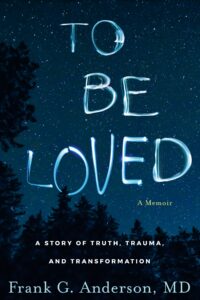The effects of trauma on mental health-related issues are widespread and far-reaching. Many people who experience overwhelming life events can respond with numbness, disconnection, and shock in the acute aftermath of a trauma. In this state, processing trauma is ineffective, the brain is in survival mode, doing what it can to protect and preserve itself from the fear helpless and horror of the event. During this stage, people primarily need love, support, and connection allowing their brain and body to slowly emerge from the trauma. There is often a tendency to suppress and deny what happened in the service of protection and survival. Over time, symptoms of post-traumatic stress disorder (PTSD) will appear in individuals who are hesitant or reluctant to process what happened to them or if they’ve had multiple unprocessed traumatic events that have accumulated over time. Symptoms of depression, anxiety, sleep difficulty, intrusive images, disconnection, and dissociation are common co-morbidities that can arise in individuals when trauma remains undigested and is not adequately addressed.
In my memoir “To Be Loved,” I describe my personal experience of being physically and verbally abused by my father at a very young age. I was sent to therapy for six years, from first through sixth grade, and during that time, I was encouraged to suppress and deny my feelings as opposed to connecting with and processing my feelings. Undigested trauma doesn’t disappear over time, it often shows up in disguised forms. I grew up being who I was “supposed to be” as opposed to who I naturally was. I learned to disconnect from my true self in the service of being what I thought others wanted or needed me to be. I was cut off from my feelings and recreated a pattern of abuse and control in my intimate relationships. I developed symptoms of depression, anxiety, and PTSD. I started taking an antidepressant and entered therapy once again to finally process my childhood trauma.

Healing from abuse can be a long, arduous process, however, the alternative is to live a life that is disconnected and inauthentic with a strong pull to recreate what is unresolved. Through my own journey and my work with clients as a psychiatrist and psychotherapist, I have developed a framework I call ‘The Four T’s to Healing Relational Trauma.’
THANK
Initially, we need to thank our trauma responses. When we go through something overwhelming, our body does its best to protect us from further harm. The reactions, responses, and symptoms that develop because of trauma are our psyche’s best attempt at keeping the pain at bay. Many of us try to get rid of our reactions to abuse and see them as problematic. Instead, I encourage people to appreciate the fear, depression, avoidance, or substance use, for example, as their best attempt at preventing them from re-experiencing their trauma. Thanking your trauma response relaxes your nervous system and opens the door to further healing.
TRUST
Next, We need to trust our internal wisdom to foster safety and access self-compassion for what we’ve experienced. When someone is traumatized, they disconnect from themselves to survive. I reassure everyone I work with that they have all they need inside of them to heal and encourage them to trust their judgment and learn to listen to their intuition again. This was a significant part of my own healing process; I needed to set boundaries with my parents and start trusting my internal wisdom again – something I disconnected from as a child. I slowly stopped getting derailed by their view of what happened to me as a child and began listening—to what I knew in my heart—happened to me.
TRANSFORM
Healing also involves transforming what doesn’t belong to us and releasing what no longer serves us. Once I reconnected to my truth, the door was open to releasing the trauma I had suffered. Based on current neuroscience knowledge in conjunction with formidable models of psychotherapy, such as eye movement desensitization and reprocessing (EMDR), sensorimotor psychotherapy (SP) and internal family systems (IFS), there are three main components to transformation.
- First, the experience needs to be witnessed. This can happen internally (i.e., mindfully being with the overwhelming experience), or it can be shared with a trusted friend or professional.
- Once the experienced is fully witnessed, a disconfirming experience is required according to the theory of memory reconsolidation. A person needs to have a corrective experience, one that is opposite from their trauma. For example, if they were hated, they need to feel loved. If they were neglected, they need to feel connected. If they were hit, they need to feel physically safe.
- The first two components pave the way for true release to happen. All the thoughts, feelings, and physical sensations that were associated with the trauma can then be released. If trauma treatment doesn’t include witnessing, a corrective experience, and release of what was held, and primarily relies on reprocessing and moving forward, true healing is not sustainable.
TAKE-BACK
Once we’ve let go of the trauma, we can take-back our power by rising above the trauma and choosing whether to forgive those who have hurt us. Some will choose never to forgive, which is always an option, but if forgiveness is preferred, it is more likely to happen after healing has occurred. Forgiveness is more beneficial for the person doing the forgiving than it is for the person being forgiven. One doesn’t condone or forget what happened, but one no longer carries the hurt, anger or resentment toward the person who violated them.
I never expected to forgive my parents for what they had bestowed upon me—my dad’s violence and my mom’s passivity. It was an unexpected gift for me to release the hurt, the anger, and the betrayal I felt toward them for so many years. Happily, I no longer carry those feelings inside of me, instead, I have accepted their limitations, I see the humanity and complexity in them both. I know their intentions were good, even if it wasn’t what I needed at the time. I feel love for them, which has been the ultimate freedom from my traumatic upbringing.
Trauma blocks love and connection, and it’s love and connection that heals trauma. When we follow the four T’s to healing trauma (thanking, trusting, transforming and taking-back our power, we can live a life that is less burdened by our past and become more connected to our authentic self—the self before the trauma.

Author of “To Be Loved: A Story of Truth, Trauma, and Transformation.”


